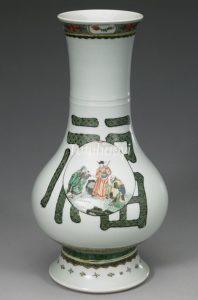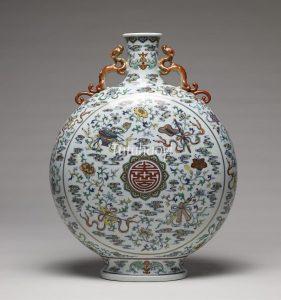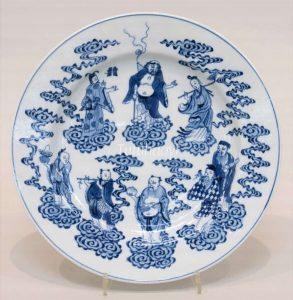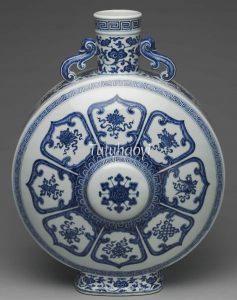Showing Results Containing
The ninth day of the ninth month is a special day in the Chinese lunisolar calendar. According to the Classic of Changes (易经 Yi Jing), ‘nine’ is a Yang number, and the ‘Double Ninth Day’ is considered auspicious and should be celebrated as a ‘Doub...
The figures of Three Star Gods are personified representation of Good Fortune, Prosperity, and Continue Reading
In this motif composition, the eight Daoist Immortals (ba xian 八仙) are not depicted in figural images, but rather are represented by their dist...
One day during Su Shi (苏轼, 1037-1101)’s exile in Huangzhou, Hubei province, his friend, Fo Yin (佛印, 1032-98) invited him and Huang Tingjian (黄庭坚, 1045-1105) to taste the ‘Peach-Blossom-Flavoured Vinegar’, made with a famous recipe inherited from the Tang dynasty (618-907). Su Shi, Huang Tingjian, and Fo Yin gathered arou...
Pines, bamboos, and plum blossoms (prunus) form the ‘Three Friends in Winter’ (岁寒三友) motif. The early blossoming plum is the harbinger of spring; the
The Eight Auspicious Emblems, also known as ‘ba bao’ (八宝, Eight Treasures), or ‘ba rui xiang’ (八瑞相, Eight Symbols of Good Fortune), are a set of symbols in traditional Tibetan Buddhism. These symbols are often depicted together, bringing positive energy, Continue Reading
‘Shuang 双’ is the Chinese word for ‘two’. ‘Xiong 雄’ in ‘Xiong ji 雄鸡’ in the Chinese name for ‘rooster’ makes a pun on ‘xiong 雄’ for ‘hero’. Thus, the image of two roosters in confrontation is meant to represent two competent officials competing with their intelligence for eminent gover...







